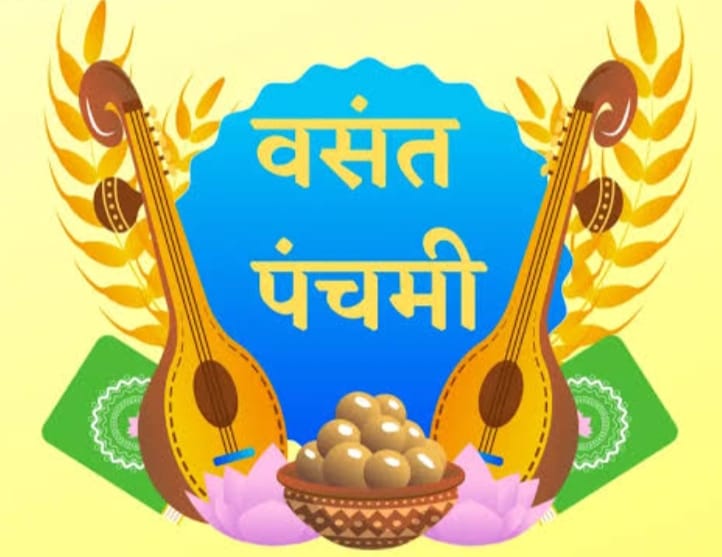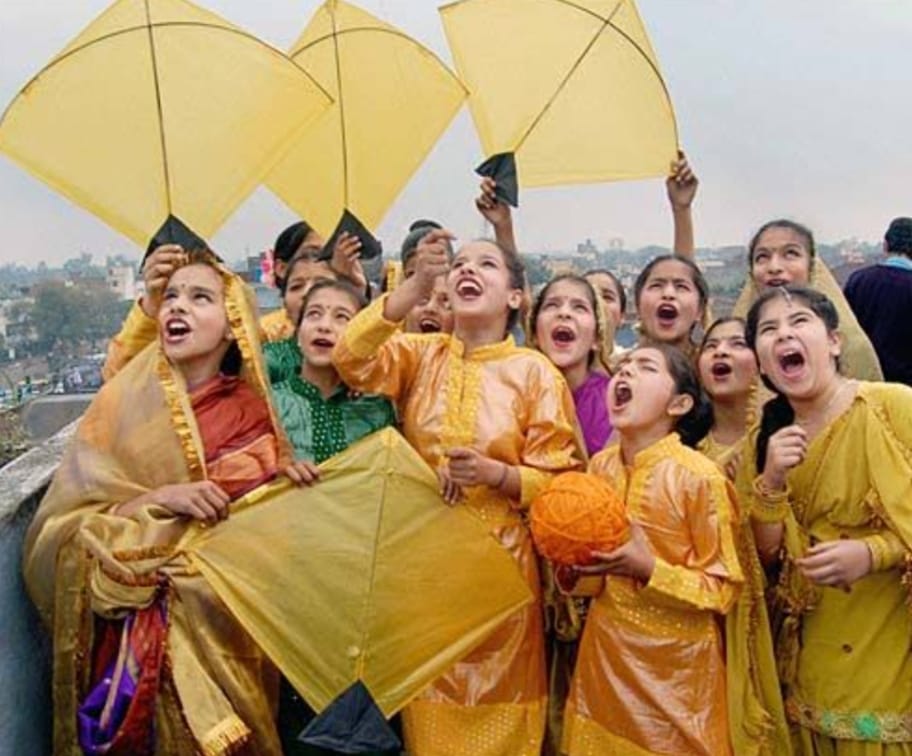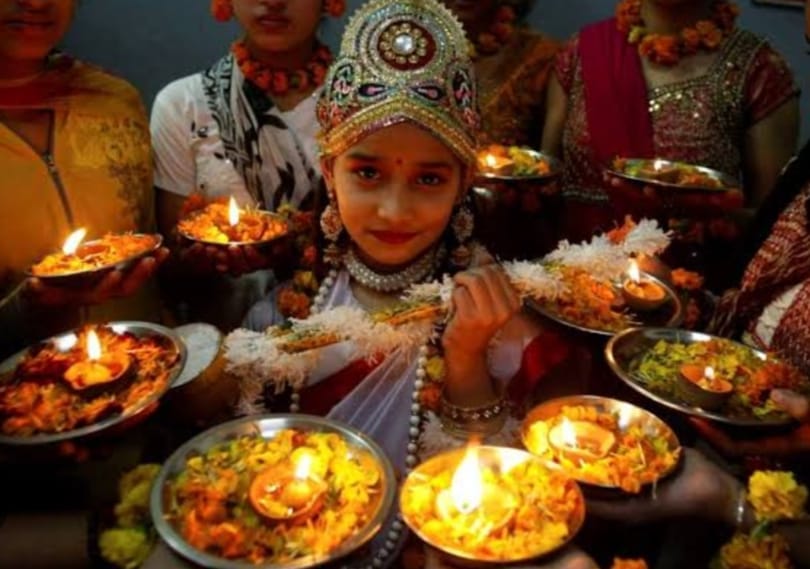Table of Contents
## Introduction to Basant Panchami
Basant Panchami, also referred to as Vasant Panchami or Saraswati Puja, is a festival that marks the start of the spring season in India. The name ‘Basant’ means spring, and ‘Panchami’ indicates that the festival takes place on the fifth day of the lunar month of Magha. Basant Panchami has been celebrated for centuries in India, and marks the end of the winter season. As winter transitions into spring, nature blooms with yellow mustard flowers, which are considered sacred and auspicious in Hinduism. The vibrancy and cheerfulness of the yellow color associated with spring gave rise to traditions of wearing yellow clothes and cooking yellow foods on Basant Panchami.The festival has both religious and cultural significance in India.

Significance of Basant Panchami
In Hinduism, Basant Panchami is dedicated to goddess Saraswati, who embodies music, art, speech, wisdom and learning. She is worshipped on this day with great fervor, especially by students, artists, poets and musicians. Many educational institutes organize special pujas and events on this day to seek blessings from the goddess of knowledge. The day also marks the birth anniversary of the famous medieval poet, Saint Sri Basavanna, in some parts of southern India.Culturally, Basant Panchami is celebrated with kite flying festivals, music and dance performances, poetry competitions and delicious feasts across India. The vibrant yellow mustard fields, foods and clothes add to the cheerfulness and positive spirit of the occasion. For many, Basant Panchami marks the beginning of spring festivities that continue till Holi. Overall, the festival signifies the victory of good over evil, light over darkness, and hope over despair.Basant Panchami, a revered Hindu festival, holds multifaceted significance, weaving together cultural, religious, and seasonal dimensions. Celebrated on the fifth day of the Hindu month of Magha, typically falling in late January or early February, it marks the exuberant arrival of spring. The festival is notably associated with the worship of Goddess Saraswati, the embodiment of knowledge, wisdom, and the arts. Devotees engage in prayers and seek her blessings, believing that this auspicious day enhances academic pursuits and creative endeavors. The vibrant yellow attire, decorations, and blossoming mustard fields during this time symbolize the vibrancy of life and nature’s renewal. Additionally, Basant Panchami heralds the beginning of the harvest season, particularly in agrarian communities, fostering a sense of abundance and prosperity.
## Date and Celebration

Basant Panchami is celebrated every year on the fifth day of the bright half of the Hindu month of Magha, which falls sometime in January or February in the Gregorian calendar. The festival marks the arrival of spring and the blooming of mustard flowers across North India, which gives the festival its yellow hues. It coincides with the festival of Saraswati Puja in some parts of India. People celebrate Basant Panchami by wearing yellow clothes, holding processions, decorating homes with yellow flowers, preparing and sharing special food, kite flying, and more. Schools and educational institutions also celebrate it as the day of Saraswati, the goddess of knowledge, with special prayers and events.In Punjab, people celebrate it as the Basant Festival by visiting Gurdwaras and holding Langars. The Sindhi community celebrates it as Jhulelal Jayanti or Cheti Chand in honor of their Ishta-devata. People also observe it as Ganga Saptami or Surya Jayanti in some parts of India.So the festival is celebrated across India, though with regional variations in customs and significance. But it is universally seen as a celebration of spring, harvest, knowledge and new beginnings. The common thread is the color yellow, kite flying, special foods and coming together of communities.
## Religious Significance of Basant Panchami

It marks the start of spring and the new harvest season. For Hindus, it has special religious meaning as the birthday of the goddess Saraswati. Saraswati is the Hindu goddess of knowledge, music, art, and culture. She represents the free flow of wisdom and consciousness. Saraswati is revered as the divine source of knowledge and creativity.On Basant Panchami, Hindus worship and seek the blessings of Saraswati. People place books, musical instruments, and other educational tools near her statue or image. Special pujas and prayers are performed asking for intellect, enlightenment, and success in creative endeavors. Students place their books and pens at the goddess’s feet to gain knowledge. They refrain from reading course books on this day and only read scriptures related to the worship of Saraswati. The color yellow also has significance, as it represents the lively energy of spring and is believed to bring good luck. People wear yellow outfits or adorn deities with yellow flowers.Overall, Basant Panchami honors the awakening of human consciousness and the triumph of light over ignorance. For Hindus, worshipping Saraswati signifies connecting with the divine source of wisdom.## Cultural Celebrations Basant Panchami is associated with vibrant cultural celebrations across India. The most iconic aspect is the flying of kites, which can be seen coloring the skies in many states. In Northern India, the festival marks the start of the spring season. People dress in yellow clothes, which is the color associated with Basant Panchami and symbolizes vitality, energy, and joy. Kite flying competitions are a hugely popular tradition on Basant Panchami in states like Gujarat, Punjab, Haryana, and Uttar Pradesh. Elaborate kites in different shapes and designs can be seen, and kite fighting is also common. In many parts of North India, fairs are held with stalls selling kite flying accessories and street food.In Bengal, the spring festival is called Vasantotsav. Houses are decorated with classic alpana floor art in yellow and orange colors. Women wear yellow saris and men wear dhotis. The feast includes special sweet dishes. People visit pandals set up with images of the goddess Saraswati as part of the Saraswati puja tradition. In Rajasthan, jasmine flowers are used extensively to decorate homes and temples. People wear jasmine garlands and enjoy sweets like ghevar. The costume of the Brijwasis of Mathura is especially famous during Basant Panchami celebrations in North India. Music and dance performances dedicated to Lord Krishna are also held in Banke Bihari temple and other places.In South India, the festival is dedicated to the worship of the goddess Saraswati. New agricultural season festivals like Pongal and Bihu are also celebrated around the same time as Basant Panchami in Tamil Nadu and Assam respectively. The common theme across all regions is the cheerful celebration of the arrival of Spring season.## Saraswati Puja Saraswati Puja is an important part of the Basant Panchami festival. It honors the Hindu goddess of knowledge, music, art, wisdom and learning – Saraswati. The puja starts early in the morning. Devotees wake up before sunrise to prepare for the puja. The idol of goddess Saraswati is given a ceremonial bath and is dressed up in yellow or white traditional attire. She is adorned with flowers, garlands and jewellery. A ritual called ‘Pran Pratishtha’ is performed to infuse the breath of life into the idol. The idol is then placed on a pedestal amidst chanting of mantras and shlokas. Devotees offer flowers, sweets, seasonal fruits and bhog to the goddess. In many places, young children are given their first lesson in writing on this day. They make their first words by writing “Om” on a plate of rice or in a bowl of water. People also place books, musical instruments and other educational objects near the feet of the goddess. This ritual symbolizes the goddess blessing knowledge and the arts. Many students keep their books and instruments for annual blessing during Saraswati puja. The color yellow is prominent during this puja, which represents knowledge and learning.After the elaborate rituals, the prasad is distributed among devotees. The puja comes to an end after the aarti when the idol is immersed in water body. The Saraswati puja is observed with great fervor all over India. It is an integral part of the Basant Panchami celebrations.
## Food and Cuisine
Basant Panchami is a festival celebrated with much enthusiasm and splendor. Special dishes and sweets are prepared in every household across India on this auspicious day. The vibrant yellow color dominates the food prepared for this occasion.One of the most popular sweets made specially for Basant Panchami is the Boondi ke Laddoo. These soft and melt-in-mouth sweet balls are made with gram flour or besan. The besan is fried into tiny boondi and then shaped into laddoos with sugar syrup. Saffron is added to the laddoos which gives them a rich golden yellow color.Saffron milk or kesariya doodh is another signature drink or offering for the Basant Panchami puja. Milk is infused with strands of saffron which lends it a vibrant yellow-orange hue. Sometimes condensed milk, sugar and cardamom are also added to enhance the flavor. Many temples distribute or sprinkle this saffron milk as prasad on Basant Panchami.Other popular sweets include roasted chana and jaggery mixtures, crispy sesame cookies and pastries filled with saffron cream. The cuisine focuses on using seasonal produce like carrots, peas and fresh fruits like banana in the dishes. Vegetarian fare is preferred on this day.The use of turmeric, saffron and other yellow ingredients symbolize the welcoming of spring and ushering in of positivity. People dress in yellow clothes and prepare yellow hued foods and sweets to align with the cheerful Vasant season. The gold or yellow color is believed to signify knowledge, wisdom, and auspicious beginnings.## In Schools and CollegesBasant Panchami is celebrated with great fervor in schools and colleges across India. Educational institutions organize various cultural programs to mark the day. The day starts with morning prayers dedicated to Goddess Saraswati. Students come dressed in yellow traditional attire. They bring yellow flowers and fruits as offerings to the goddess. Many schools arrange special assemblies and activities like dance, music, drama, poetry recitation, speech competitions etc. Students showcase their talents during these events. Essay writing and drawing competitions with themes related to the festival are also held. The schools are decorated with yellow flowers, rangoli and paper craft. Kites and yellow balloons can be seen floating everywhere. Sweet dishes like boondi ke laddoo or saffron flavored rice is distributed as prasad. In some parts, students go out to fly kites together. This adds to the festive spirit. The atmosphere is filled with joy and excitement.Basant Panchami celebrations in colleges are also centered around Saraswati Puja. Students dress up in traditional wear and participate enthusiastically in the cultural programs. The day is a lively break from regular academics.## Basant Panchami WishesBasant Panchami is a festive occasion to send warm wishes to loved ones. Here are some sample Basant Panchami wishes and messages you can share:- May Goddess Saraswati bless you with knowledge and wisdom. Happy Basant Panchami!- On this auspicious day, I hope and pray that the divine blessing of Goddess Saraswati be with you. Shubh Basant Panchami! – May the festival of Basant Panchami bring the fragrance of joy and the brilliance of knowledge to your life.- Let us pray to Goddess Saraswati to bless us with the ocean of knowledge that never ends. Happy Basant Panchami!- May this day fill your life with the spirit of joy. May you be blessed by Maa Saraswati and all your dreams come true. Happy Basant Panchami!- Sending you my heartfelt wishes on the golden day of Basant Panchami. May you achieve success, wisdom and good fortune.- May the divine blessings of Goddess Saraswati bring enlightenment to your life. Shubh Basant Panchami!- On this Basant Panchami, I hope that Maa Saraswati blesses you and fills your life with knowledge and wisdom.- Wishing you and your family a very Happy Basant Panchami! May this harvest season bring you good health, wealth and prosperity.

## Festivals in Spring
Springtime in India brings with it a burst of cultural and religious celebrations. Along with Basant Panchami, there are several other major Indian festivals that take place during this season:**Holi** – The festival of colors and love, Holi is celebrated with great fervor across India in March/April. People throw colored powder and water on each other to celebrate the triumph of good over evil. Prayers, songs, and dance also mark the celebrations. Holi signifies the arrival of spring and the harvest season.**Vaisakhi** – Mainly celebrated in North India as the Sikh new year, Vaisakhi falls on April 13 or 14. It commemorates the formation of the Khalsa panth in 1699 under Guru Gobind Singh. Sikhs visit gurdwaras, hold processions, and partake in feasts. Hindus also celebrate the solar new year. **Easter** – Being a largely Christian holiday, Easter holds special importance for the Christian community in India. Christians attend mass, hold prayer meetings, and feast together to celebrate the resurrection of Jesus Christ. Churches are decorated with lights and flowers to mark the occasion.**Buddha Purnima** – The birthday of Lord Buddha is celebrated as Buddha Purnima, which typically falls in April/May. The festival is marked by prayers, meditation, sermons on the life of Buddha, and candlelight processions. Devotees also refrain from eating meat and alcohol on this auspicious day.The spring season thus heralds numerous festivals and celebrations in India, highlighting the country’s diversity. The pleasant weather, blooming flowers, and ripening crops add to the festive spirit.
## ConclusionBasant Panchami
It marks the arrival of spring season and the end of the winter chill. For many Hindus, it has a great religious significance as the birthday of Goddess Saraswati is celebrated on this day with great fervor. She is the Hindu deity of knowledge, music, art and culture. Goddess Saraswati is revered highly in the Hindu tradition and devotion to her can help one become learned and wise. Her puja on Basant Panchami reminds devotees to seek knowledge and strive for wisdom in life. The occasion also signifies that the fields are ready for sowing after the cold winter. Farmers celebrate this festival with joy and high hopes for a good harvest. People wear yellow clothes, share sweets, and pray to Goddess Saraswati for her blessings. Kite flying competitions are also a popular part of Basant Panchami festivities. The yellow mustard flowers blooming everywhere create a perfect festive ambiance.In essence, Basant Panchami is a celebration of the arrival of spring and a day to pay respect to Saraswati Maa. The occasion fills people’s hearts with hope and cheerfulness after the intense cold months. It is an auspicious start of warmer and longer days ahead. For students, it is also an occasion to pray to the Goddess to bestow intelligence and help in their studies. The vibrant yellow color of Basant Panchami captures the joy and spirit of the occasion.














